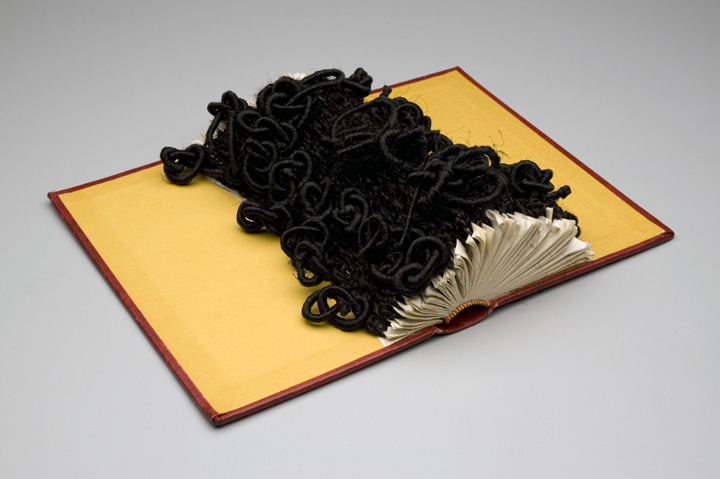


Here is a brief rundown two common terms used in book arts:
Edition
This term is often seen in book descriptions. A book will either be part of an edition or a unique offering.
An artist can determine how many of a book to make. An edition can be as few as two or it can be hundreds. An open edition means that more of the book can be made in the future. Other editions are finite - the artist determines how many to make, usually before production.
Each individual work in an edition may be exactly the same, or may differ somewhat. For example, in my Edges series, which is made from books that were altered by cutting and adding needlework, I created four for the edition. Each of the four original books are from same literature series and the subject of the finished pieces are the same, but each individual book features a different “hair style.”
Sometimes an artist will decide to create a deluxe and standard edition. Deluxe editions usually have something special that the standard edition does not. The special item may be how the book is printed (more on that later), a custom box made to house the work, inclusion of a sculptural component, or the addition of a precious metal. Deluxe editions are usually costlier than standard editions.
In order to identify individual books in an edition, the artist will assign it a number. For example, the third book of an edition of 10 will be notated as: Edition 3 of 10 or 3/10. This numbering system is also used in printmaking. Some may feel that the number in the edition denotes quality, but this is usually not the case.
A unique book means that it is the only one. No other copies were made.
An Artist Proof (A/P) means that there is something a little different in this book. Even the most streamlined book requires test runs. An artist proof is often a run that is acceptable, but maybe a feature, such as a type of paper, color of ink, image, etc. was changed before the edition was produced.
Press Name
Some books will feature a small logo or text denoting the press name. Consider a book obtained from a mainstream bookseller. The publisher’s imprint (name) is listed - usually on the spine, and the front or back covers. In basic terms, a publisher charges to print and sell books. Publishers offer other services too, such as editing and designing. Most makers of artist books are self publishers - they make the decisions for their work and often fabricate the work themselves. Many artists use a press name even if they create books without text. Others do not. Having or not having a press name in an of itself does not determine the value of an artist book.
In the next Bookish post, we’ll discuss printing terms.